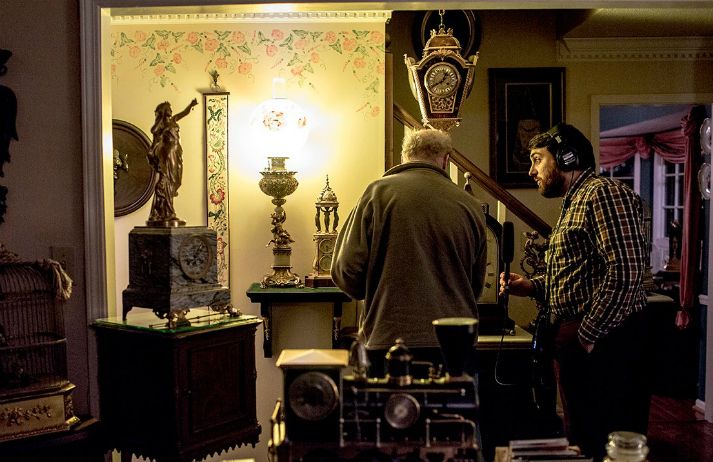
Averaging 2.2 million listeners per episode, NPR’s Serial was not only a runaway success, but a game changer for podcasts as a medium; over a fifth of Americans now listen to them, and numbers continue to grow. Hot on the heels of its predecessor, S-Town – from the same creators – has attracted 1.8 million subscribers in just two months. And while a range of factors have contributed to its success, maybe it’s not so surprising that, at a time when America attempts to understand the opinions they missed in the run-up to the election, the story of a New York-based journalist attempting to understand a middle-aged eccentric from Shit Town, Alabama has landed so well. We explore the science behind the podcast and why it resonates so much with a divided America.
“John B McLemore lives in Shit Town, Alabama.” That was the subject line of the email John B. McLemore sent journalist Brian Reed, putting the wheels in motion for a years-long process that would eventually culminate in the release of S-Town. But while McLemore had gotten in touch with Reed to discuss a murder he believed to have happened in his Shit Town, the finished product would centre around McLemore himself; a multi-faceted protagonist who bridges some of the political divides America faces. At a glance, he is a middle-aged man with a broad intellect and more than a few screws loose, who lives with his mother deep in Alabama and fixes clocks for work.
But over the course of seven episodes – all of which were dropped simultaneously – McLemore is revealed to be sexually fluid, heavily tattooed and potentially wealthy. Listeners are given a crash course in horology, sent on a treasure hunt for buried gold and subjected to conflicts between John’s hick hometown friends and his slightly more cosmopolitan Florida-based family members. The twists and turns the story makes aren’t always cohesive, but McLemore’s eccentricities are more than engaging enough to keep viewers hooked through the series’ seven episodes – which has no doubt contributed to its overwhelming success. In the two months following its release, it’s been downloaded 40 million times.

“It seemed like something you would read in a novel,” says Reed. “This accomplished clock restorer juxtaposed with the portrait of this decaying town.” In this sense, S-Town exemplifies its cultural context, where the lines between fact and fiction have been blurred beyond recognition, helped in no small part by the advent of the internet. It’s a cocktail of factual accounts and fictional storytelling tropes that epitomise the post-truth era.
Of course, this is nothing new; historically, facts have proven to be more palatable when they’re wrapped up as fiction. We are, after all, storytelling creatures. “The default mode of human cognition is a narrative mode,” says Jonathan Adler, assistant professor of psychology at Olin College of Engineering. This predisposition has contributed to the success of numerous media offerings that preceded S-Town – Serial among them. But this habitual consumption of facts-posing-as-fiction has also made us less able to differentiate between the two, a vulnerability that’s played its part in the ‘fake news’ crisis that’s become so headline-worthy.
There’s a sweet irony in this, since arguably, S-Town’s success can also be partially attributed to post-election America’s renewed fascination with small town mentality and the working classes. With 69% of Americans ‘shocked’ by Trump’s election, while almost half (41%) have changed their social media habits since the event, discontent around filter bubbles and fake news has led to a heightened desire to ‘understand’ their fellow man.

An attempt to empathise with a Republican voters who are broadly considered to be older, more poor or more rural has become a central narrative in much central and liberal media in terms of reconciling their understanding of what happened in the run-up to the election. Here enters Reed, on a mission to understand a person from Shit Town, Alabama. “I think trying to understand another person is a worthwhile thing to do,” he confirms in the sixth instalment of the series – especially apt at a time when studies suggest people are less empathetic than ever.
While there’s no explicit reference to politics, the clash of opinions – and numerous misunderstandings – between McLemore’s Florida cousins and the Shit Town residents he called friends is surely emblematic of this divide. McLemore himself fits into neither of these groups; as a globally-minded intellectual living in smalltown Alabama, he is a reminder that people cannot be neatly divided into two groups, and that the many shades of grey in between are integral to marrying together extreme views. And after working on it for three years, there may have been no better time for Reed to publicise his attempt to understand a place so unfamiliar to him, in the hopes that the rest of the nation might do the same.
Lore Oxford is cultural editor at Canvas8, which specialises in behavioural insights and consumer research. She previously ran her own science and technology publication and was a columnist for Dazed and Confused. When she’s not busy analysing human behaviour, she can be found defending anything from selfie culture to the Kardashians from contemporary culture snobs.



